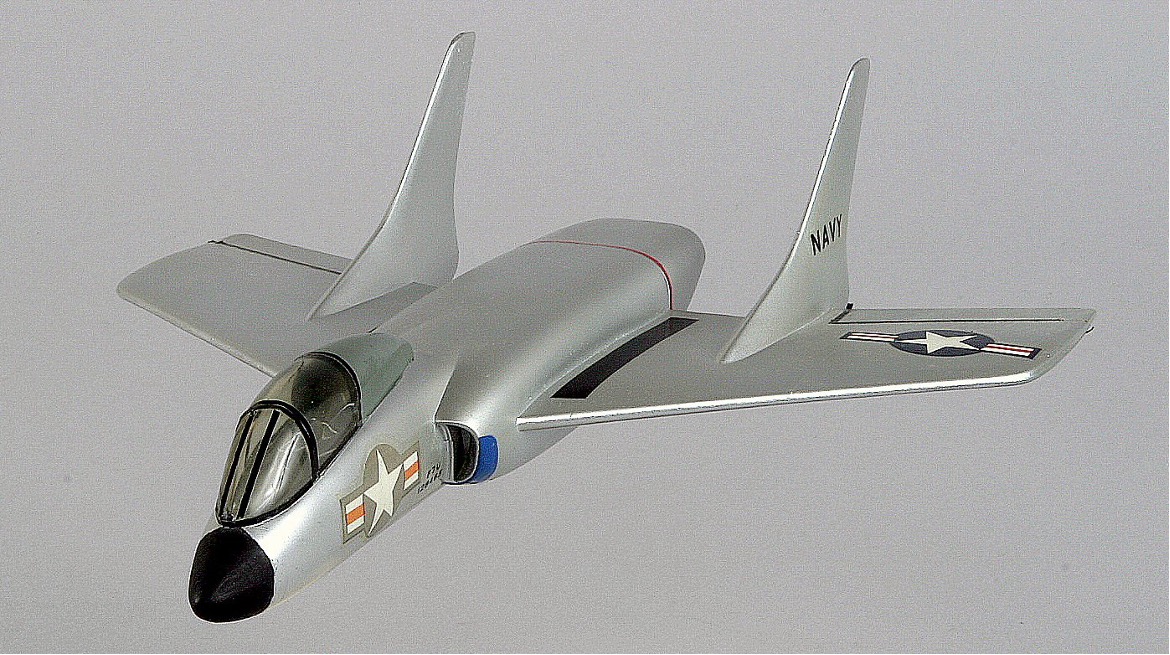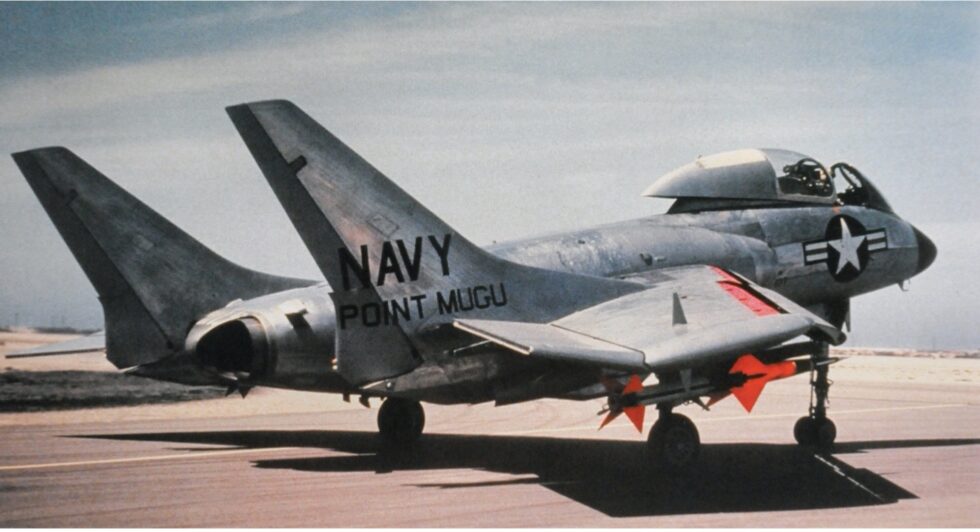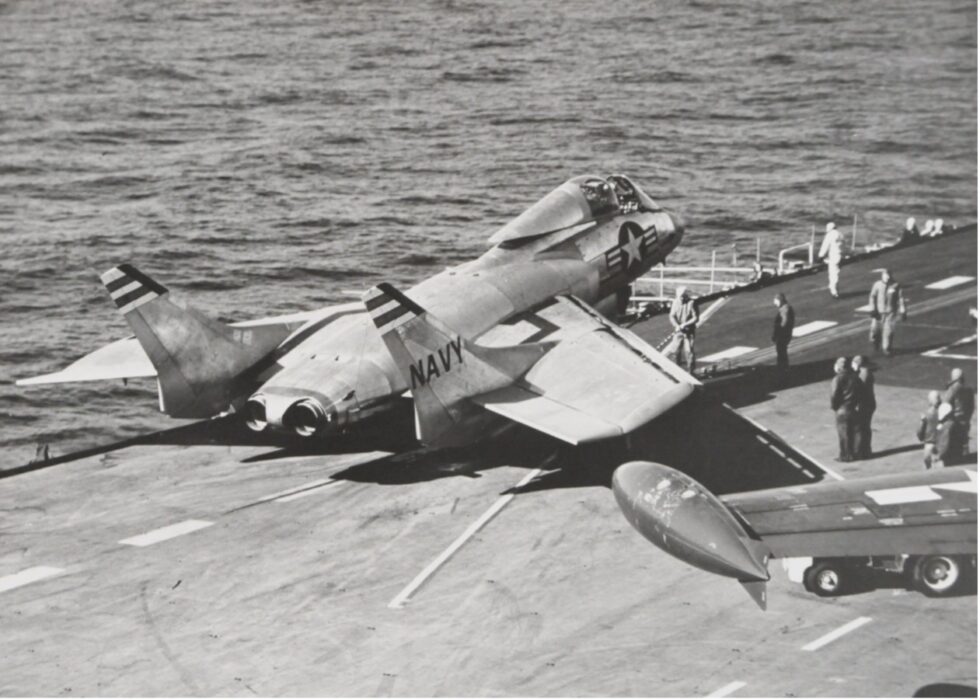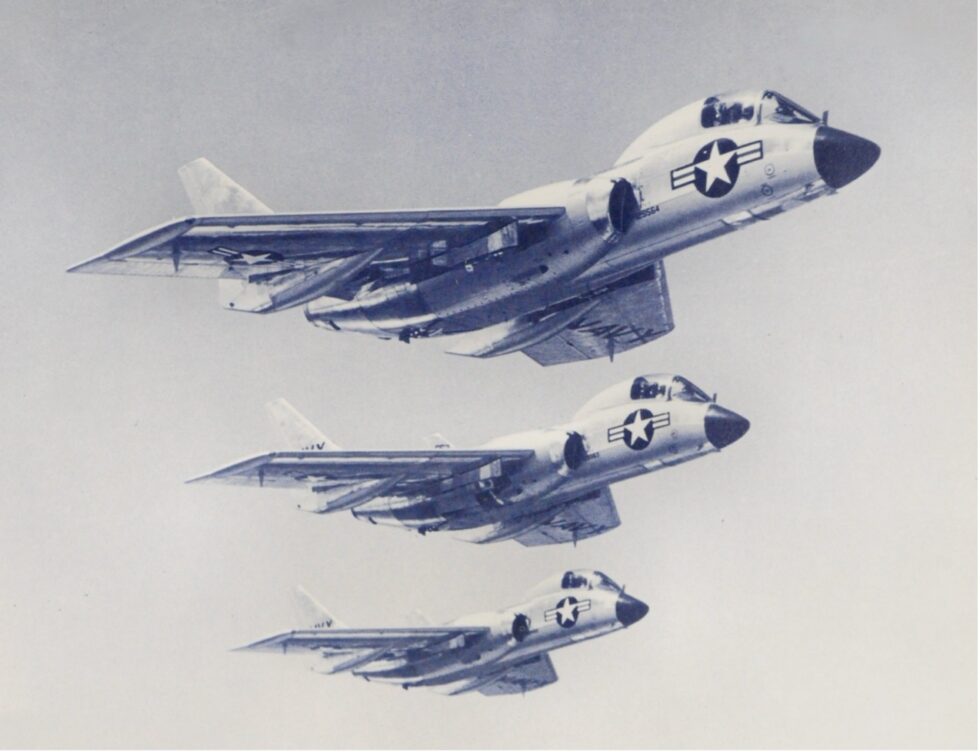USN NASWF Vought F7U-3 Cutlass

MODEL BY:
LTV & H. Davidson
Model Scale:
1/48
MODEL ADDED:
11/05/1965
historical significance
First Albuquerque Visit: 1954
Additional Information:
The Vought F7U Cutlass is a United States Navy carrier-based jet fighter and fighter-bomber produced by the aircraft manufacturer Chance Vought. It was the first tailless production fighter in the United States and the first to be designed with afterburners. The Cutlass was developed during the late 1940s and early 1950s as Vought’s entry in a United States Navy competition. Their design team, which was influenced by design information obtained from Nazi Germany, opted for a tailless configuration paired with low aspect ratio swept wings, which was regarded as a radical departure from traditional aircraft design for the era. Vought’s submission was favored by Navy officials and was declared the winner in 1946. On 29 September 1948, the prototype performed its maiden flight. It was initially powered by a pair of Westinghouse J34 turbojet engines which were relatively underpowered, contributing to its accident-prone nature.
The first production model of the Cutlass, the F7U-1, entered service during July of 1951. It was promptly followed by F7U-2 and F7U-3, both improved models that were equipped with more powerful engines among other refinements. However, the Cutlass continued to frequently suffer from both technical and handling problems throughout the aircraft’s short service career. Accidents involving this aircraft were responsible for the deaths of four test pilots and 21 other U.S. Navy pilots. Over one quarter of all Cutlasses built were destroyed in accidents. This high accident rate led to its being withdrawn from service during the late 1950s.
Albuquerque’s Kirtland Field was designated Kirtland Air Force Base in 1947, and the Armed Forces Special Weapons Project (AFSWP) operated on Sandia Base. When the United States Air Force established the Air Force Special Weapons Command at Kirtland Air Force Base in 1949, the United States Navy formed a detachment to investigate nuclear capabilities for naval aircraft and assist the AFSWP with naval equipment for demonstrations and training. The Naval Weapons Evaluation Facility (NWEF) operated through the Cold War investigating aircraft-weapon interfaces to provide United States Navy aircraft with nuclear weapons delivery capability.
In 1952 this detachment was designated the Naval Air Special Weapons Facility (NASWF) to conduct special weapons tests on the White Sands Missile Range and Tonopah Test Range in coordination with the United States Atomic Energy Commission. In March of 1961, the NASWF was re-designated the Naval Weapons Evaluation Facility (NWEF) and its mission was expanded to include safety studies on nuclear weapons. The aircraft used for NWEF testing were decorated with the NWEF thunderbird symbol and the NWEF detachment became known as the Rio Grande Navy by its sailors and civilians.
In 1992, with the consolidation of many naval activities and the drawdown of the U.S. defense budget, NWEF became part of the large, multisite Naval Air Warfare Center Weapons Division in China Lake. In 1993 the NWEF was decommissioned and became the first nuclear-weapons-related facility in the Free World to be shut down. As NWEF closed, it transferred some of its remaining people and functions to the China Lake site.
The Naval Air Special Weapons Facility (NASWF) attached to Kirtland Air Force Base in Albuquerque, New Mexico, conducted weapons separation tests at Holloman AFB and White Sands Missile Range (WSMR) in 1954 using the Vought F7U Cutlass aircraft number Bu No. 128465.
GALLERY:
SEARCH OUR DATABASE:




